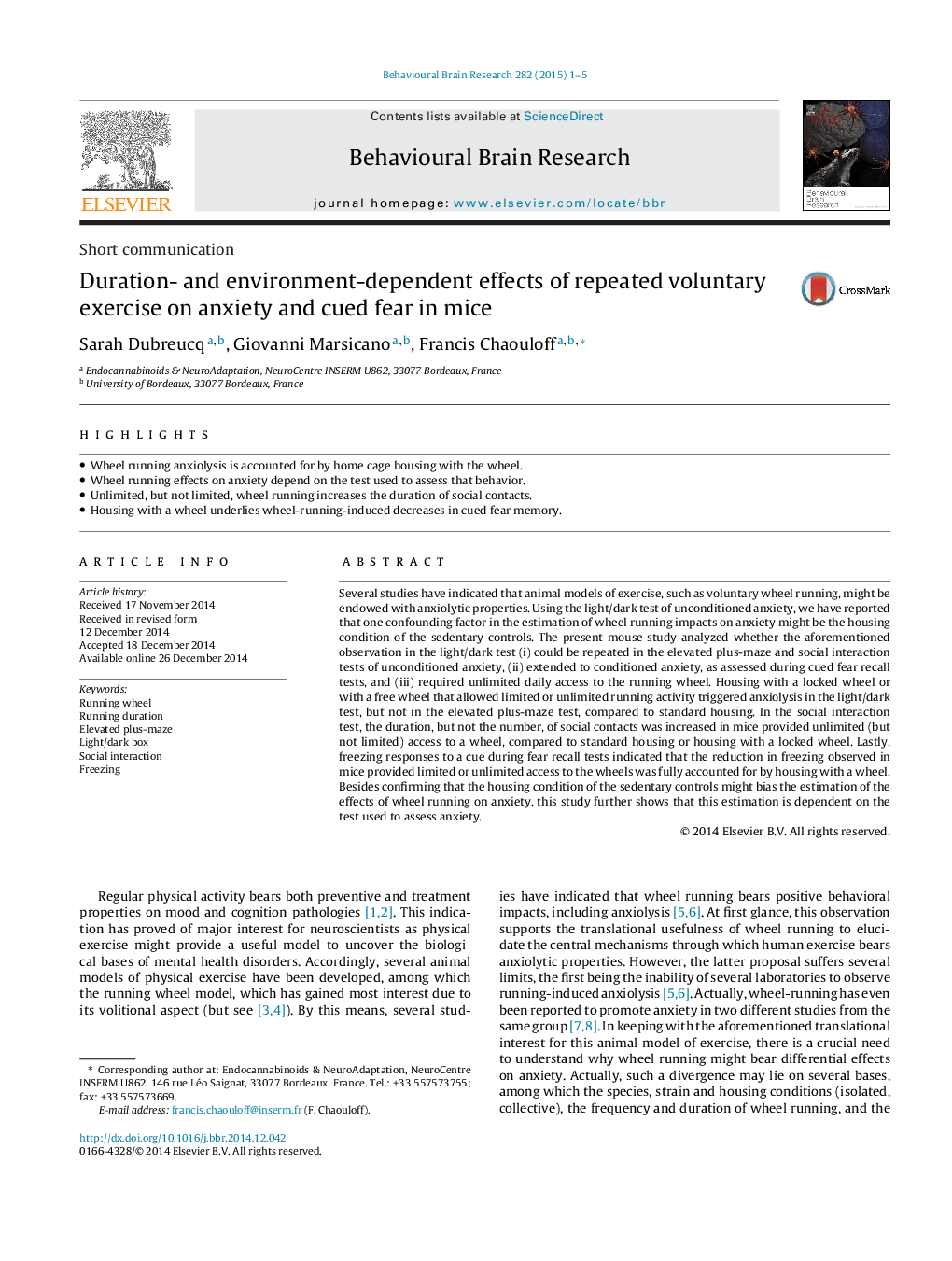| کد مقاله | کد نشریه | سال انتشار | مقاله انگلیسی | نسخه تمام متن |
|---|---|---|---|---|
| 6257302 | 1612950 | 2015 | 5 صفحه PDF | دانلود رایگان |
- Wheel running anxiolysis is accounted for by home cage housing with the wheel.
- Wheel running effects on anxiety depend on the test used to assess that behavior.
- Unlimited, but not limited, wheel running increases the duration of social contacts.
- Housing with a wheel underlies wheel-running-induced decreases in cued fear memory.
Several studies have indicated that animal models of exercise, such as voluntary wheel running, might be endowed with anxiolytic properties. Using the light/dark test of unconditioned anxiety, we have reported that one confounding factor in the estimation of wheel running impacts on anxiety might be the housing condition of the sedentary controls. The present mouse study analyzed whether the aforementioned observation in the light/dark test (i) could be repeated in the elevated plus-maze and social interaction tests of unconditioned anxiety, (ii) extended to conditioned anxiety, as assessed during cued fear recall tests, and (iii) required unlimited daily access to the running wheel. Housing with a locked wheel or with a free wheel that allowed limited or unlimited running activity triggered anxiolysis in the light/dark test, but not in the elevated plus-maze test, compared to standard housing. In the social interaction test, the duration, but not the number, of social contacts was increased in mice provided unlimited (but not limited) access to a wheel, compared to standard housing or housing with a locked wheel. Lastly, freezing responses to a cue during fear recall tests indicated that the reduction in freezing observed in mice provided limited or unlimited access to the wheels was fully accounted for by housing with a wheel. Besides confirming that the housing condition of the sedentary controls might bias the estimation of the effects of wheel running on anxiety, this study further shows that this estimation is dependent on the test used to assess anxiety.
Journal: Behavioural Brain Research - Volume 282, 1 April 2015, Pages 1-5
